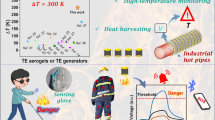Abstract
In the literature, several definitions can be found for the thermal conductivity; however, many of them are not clearly explained. The easiest explanation is the following: the property of a material to conduct heat. It is evaluated primarily in terms of Fourier’s Law for heat conduction. Nowadays, the examination of the thermal conductivity of building materials is very important both for the manufacturers and for the consumers. Nonetheless in real, confusing definitions and interpretations can be found regarding the exact meaning of the thermal conductivity of the materials. In physics and in engineering practice, the following appellations are used as heat conductivity, thermal conduction coefficient, design and declared values of the thermal conductivities as well as the effective thermal conductivity. In this article we would give an overview about the correct explanations of the above-mentioned values. At first thermal conductivity measurements of four different types of expanded polystyrene materials (EPS, 80, 100, 150, 200) will be presented by using Holometrix Lambda 2000 type Heat Flow Meter after drying them in a Venticell 111 type laboratory oven to changeless mass.







Similar content being viewed by others
References
Pe´rez-Lombard L, Ortiz J, Pout CA. Review on buildings energy consumption information. Energy Build. 2008;40:394–8.
Kalmár F, Kalmár T. Energy class, building structure and solar gains. J Harbin Inst Technol (New Ser). 2007;14:81–4.
Lakatos A, Kalmar F. Analysis of water sorption and thermal conductivity of expanded polystyrene insulation materials. Build Serv Eng Res Technol. 2013;34:4407–16.
Lakatos A, Kalmar F. Investigation of thickness and density dependence of thermal conductivity of expanded polystyrene insulation materials. Mater Struct. 2013;46(7):1101–5.
Jelle BP. Traditional, state-of-the-art and future thermal building insulation materials and solutions—properties, requirements and possibilities. Energy Build. 2011;43:2549–63.
Muñoz DF, Anderson B, Cejudo-Lópeza JM, Carrillo-Andrés A. Uncertainty in the thermal conductivity of insulation materials. Energy Build. 2010;42(11):2159–68.
Cha J, Seo J, Kim S. Building materials thermal conductivity measurement and correlation with heat flow meter, laser flash analysis and TCi. J Therm Anal Calorim. 2012;109:295–300.
Fukushima H, Drzal LT, Rook BP, Rich MJ. Thermal conductivity of exfoliated graphite nanocomposites. J Therm Anal Calorim. 2006;85:235–8.
Chen M, Wan S, Lingchao G, Zhao LP, Gong C. Effect of matrix components with low thermal conductivity and density on performances of cement-EPS/VM insulation mortar. J Therm Anal Calorim. 2016;126:1123–32.
Wilinska I, Pacewska B. Calorimetric and thermal analysis studies on the influence of waste aluminosilicate catalyst on the hydration of fly ash–cement paste. J Therm Anal Calorim. 2014;16(2):689–97.
Lakatos Á. Measurements of thermal properties of different building materials. Adv Mater Res. 2014;1016:733–7.
Lakatos A, Csáky I, Kalmár F. Thermal conductivity measurements with different methods: a procedure for the estimation of the retardation time. Mater Struct. 2015;48(5):1343–53.
Lakatos A. Measurement of the decrement factor of different wall structures. WSEAS Trans Heat Mass Transf. 2016;11:1–5.
Moga L, Moga I. Masonry thermal conductivity influence on thermal performance of a thermally insulate wall. J Appl Eng Sci. 2011;1143:51–8.
Shanshan C, Cremaschi L, Afshin JG. Pipe insulation thermal conductivity under dry and wet condensing conditions with moisture ingress: a critical review. HVAC&R Res. 2014;20:4.
Koru M. Determination of thermal conductivity of closed-cell insulation materials that depend on temperature and density. Arab J Sci Eng. 2016;41:4337–46.
Moga L, Moga I. Heat loss coefficient influence on the energy performance of buildings, In: Indoor Air 2014—proceedings of the 13th international conference on indoor air quality and climate. (2014); ISBN 978-1-64339-731-5, pp 299–306.
Davraz M, Kilinçarslan S, Koru M, Tuzlak F. Investigation of relationships between ultrasonic pulse velocity and thermal conductivity coefficient in foam concretes. Acta Phys Pol A. 2016;130(1):469–70.
Kirilovs E, Kukle S, Beļakova D, Borodiņecs A, Ruciņš Ā, Stramkale V. Thermal conductivity of hemp based boards. Tehnologija Resursi Environ Technol. 2015;1:61–6.
Schiavoni S, D’Alessandro F, Bianchi F, Asdrubali F. Insulation materials for the building sector: a review and comparative analysis. Renew Sustain Energy Rev. 2016;62:988–1011.
Lakatos Á. Thermophysical investigations of nanotechnological insulation materials. AIP Conf Proc. 2017;1866:030003. doi:10.1063/1.4994479.
Acknowledgements
This paper was supported by the EFOP-3.6.1-16-2016-00022 “Debrecen Venture Catapult Program” project.
Author information
Authors and Affiliations
Corresponding author
Rights and permissions
About this article
Cite this article
Lakatos, Á. Thermal conductivity of insulations approached from a new aspect. J Therm Anal Calorim 133, 329–335 (2018). https://doi.org/10.1007/s10973-017-6686-5
Received:
Accepted:
Published:
Issue Date:
DOI: https://doi.org/10.1007/s10973-017-6686-5




